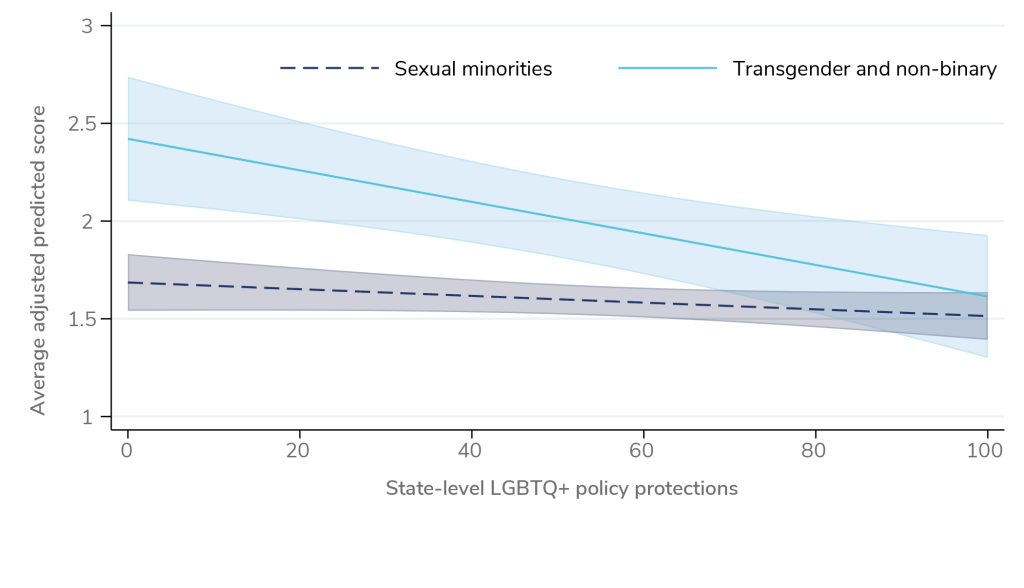Community support, identity centrality, and state policy: Associations with healthcare discrimination in sexual and gender minority–partnered adults
Principal Investigator

Claire Kamp Dush, Professor, Department of Sociology, University of Minnesota
Co-Investigators
- Alex Bates, PhD Candidate, Division of Epidemiology and Community Health, University of Minnesota
- Wendy Manning, Founder, Center for Family and Demographic Research, Bowling Green State University
Funded By
Social, Behavioral, and Economic COVID Coordinating Center (SBE CCC)
The Problem
Healthcare discrimination is a prevalent issue within LGBTQ+ communities, in part because it can decrease the likelihood of seeking medical care, resulting in worse health outcomes later on. This problem is exacerbated by the rising tide of anti-LGBTQ+ rhetoric and policies. For instance, in 2024, the ACLU tracked 515 anti-LGBTQ+ bills across the United States, highlighting the severity and pervasiveness of the issue.
The Approach
Using the National Couples’ Health and Time Study (NCHAT), a nationally representative study of U.S. couples, the team examined the effects of state policies on healthcare discrimination against transgender individuals and sexual minorities. From September 2020 to April 2021, a sample of 3,642 NCHAT couples aged 20-60 was gathered with an intentional oversampling of sexual minorities and racially and ethnically diverse individuals.
NCHAT asks questions including, “I worry about being judged,” and “Healthcare providers don’t take my concerns seriously.” Additionally, NCHAT includes questions about perceived community support for LGBTQ+ individuals. The researchers also measured gender identity centrality—the reported importance of one’s gender to their identity.
To analyze state-level policies, the team used data from the Movement Advancement Project, which categorizes policies as protective or harmful, and the Human Rights Campaign State Equality Index.
The research team applied a weighted multilevel ordinary least squares multivariate regression model with a cross-level interaction term between gender identity and policy score. This model estimates the predicted healthcare discrimination score among sexual minorities and transgender and nonbinary individuals.
The Findings
For transgender and nonbinary individuals, an increase in reported gender identity centrality correlates with an increase in healthcare discrimination.
Among sexual minorities, greater perceived community support was associated with a decrease in predicted healthcare discrimination. For transgender and nonbinary individuals, however, higher perceived community support was not linked to any discernible difference in reported healthcare discrimination.
Lastly, more protective state policy environments were associated with lower instances of reported healthcare discrimination.

A band chart labeled “Predicted healthcare discrimination by gender identity.” The y-axis displays state-level LGBTQ+ policy protection scores from 0 to 100 and the y-axis displays average adjusted predicted healthcare discrimination scores on a scale of 1 (strongly agree) to 5 (strongly agree). There are two banded lines, one labeled “Sexual minorities” and the other labeled “Transgender and non-binary.” The graph shows that for sexual minorities, healthcare discrimination scores do not change based on state LGBTQ+ policy protections for sexual minorities, but for transgender and non-binary people, healthcare discrimination scores decrease as state policy protection scores increase.